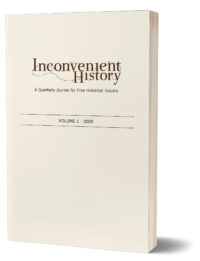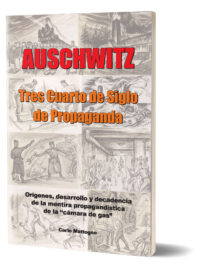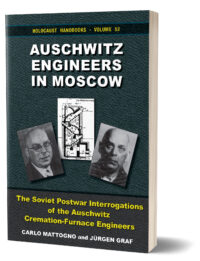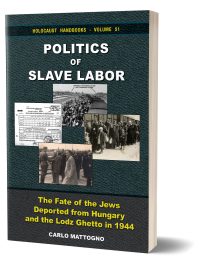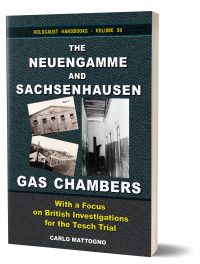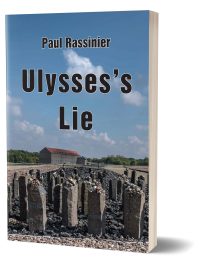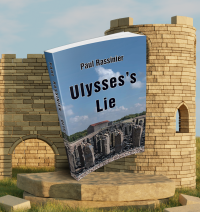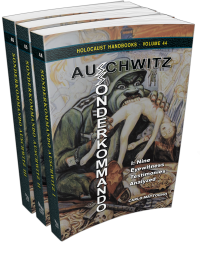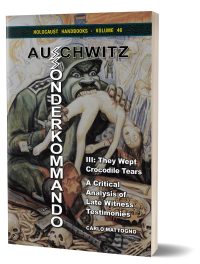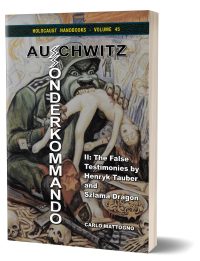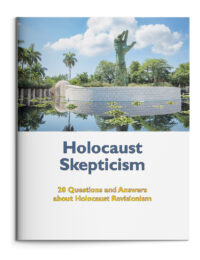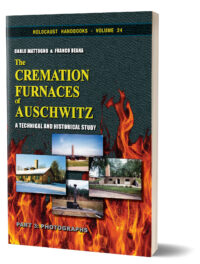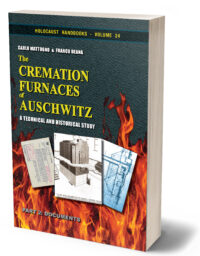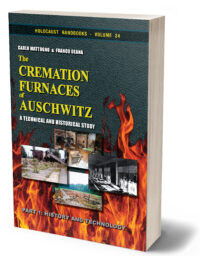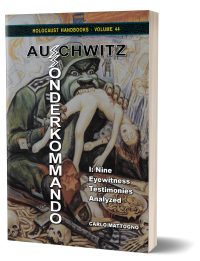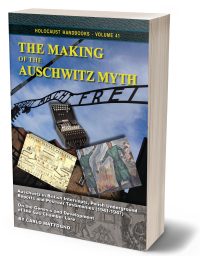This encyclopedia gives you an uncensored and unconstrained look at all the pertinent evidence that upholds the orthodox Holocaust narrative: the true, the false, and the mendacious. It also exposes the various forces and influences that have dictated how this narrative was formed, and how it is protected from skeptical prying eyes. If you ever wanted to understand the postwar world we live in, this is a good starting point. Learn about the biggest propaganda campaign mankind has ever seen, and how it braced the postwar world psychologically. This encyclopedia gives you all the information you ever wanted, and information you didn’t even know exists, right at your fingertips. The book has 634 pages, 579 entries, 357 illustrations, an introduction, bibliography, and a names index (printed version only).
Download our promotion flyer for this Encyclopedia here, or watch our 30-minute introduction to this fine tome:
Available Versions
eBook or Print Book
If you are an internet blogger or writer and plan on quoting text from the encyclopedia in your blogs and articles, or if you are a researcher or aficionado who wants to locate items by searching for them electronically, we recommend you purchase an eBook version. If you prefer owning a physical book, want to display it proudly on your bookshelf, plan on showing it off or have others leaf through it, you will be better served with a printed edition.
Hardback or Paperback
This is a large and heavy book. A paperback cover will not support it well, hence it will sag and deform over time when standing upright on a shelf. If you want it to maintain its shape under such circumstances, it is better to purchase the sturdy hardcover edition, which costs us only $5 (b&w) or $3 more to produce than the paperback edition. We pass on that production surcharge with no additional markup of our own, to help you make that reasonable upgrade – a tiny investment well worth its price.
Color or Black & White
Most photos of the WWII era are in black and white. Hence, only 101 of the 357 illustration in this book are color illustrations, and they are scattered throughout. Printing the book in color throughout, even though only some 28% of all illustrations are in color, will still render the remaining 72% of illustration in black and white. However, color printing requires a better paper stock, and increases production costs by well over $20 per copy. You decide whether it is worth the additional cost. If you opt for a color edition, please be aware that 72% of all illustrations will still be in black and white! (Note that all eBooks are in color throughout, wherever there is any color.)
(For delivery addresses not covered by this shop, please place your order at www.NukeBook.org)
Select your preferred format below.


